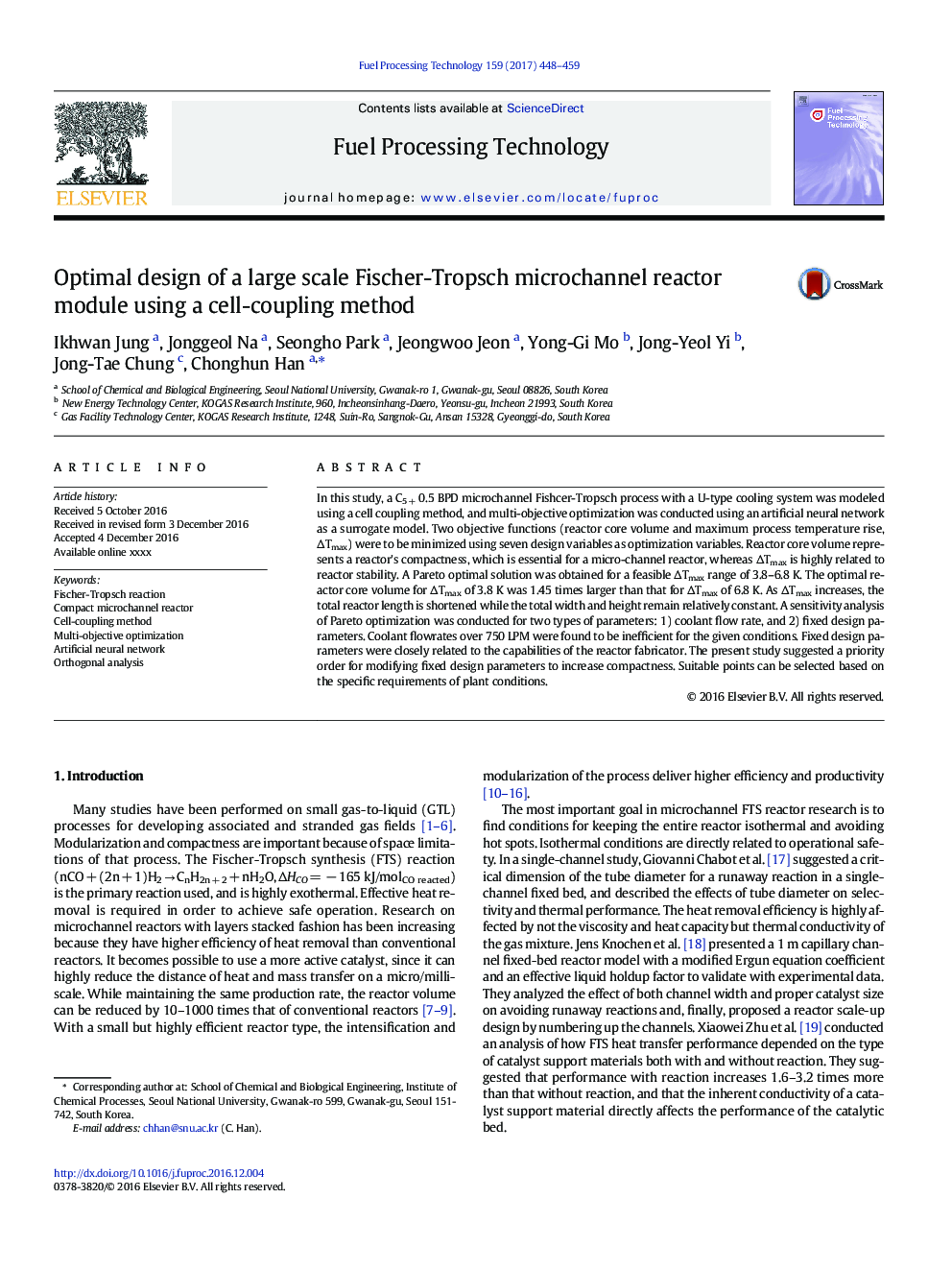| Article ID | Journal | Published Year | Pages | File Type |
|---|---|---|---|---|
| 4914385 | Fuel Processing Technology | 2017 | 12 Pages |
Abstract
In this study, a C5Â + 0.5 BPD microchannel Fishcer-Tropsch process with a U-type cooling system was modeled using a cell coupling method, and multi-objective optimization was conducted using an artificial neural network as a surrogate model. Two objective functions (reactor core volume and maximum process temperature rise, ÎTmax) were to be minimized using seven design variables as optimization variables. Reactor core volume represents a reactor's compactness, which is essential for a micro-channel reactor, whereas ÎTmax is highly related to reactor stability. A Pareto optimal solution was obtained for a feasible ÎTmax range of 3.8-6.8Â K. The optimal reactor core volume for ÎTmax of 3.8Â K was 1.45 times larger than that for ÎTmax of 6.8Â K. As ÎTmax increases, the total reactor length is shortened while the total width and height remain relatively constant. A sensitivity analysis of Pareto optimization was conducted for two types of parameters: 1) coolant flow rate, and 2) fixed design parameters. Coolant flowrates over 750 LPM were found to be inefficient for the given conditions. Fixed design parameters were closely related to the capabilities of the reactor fabricator. The present study suggested a priority order for modifying fixed design parameters to increase compactness. Suitable points can be selected based on the specific requirements of plant conditions.
Keywords
Related Topics
Physical Sciences and Engineering
Chemical Engineering
Chemical Engineering (General)
Authors
Ikhwan Jung, Jonggeol Na, Seongho Park, Jeongwoo Jeon, Yong-Gi Mo, Jong-Yeol Yi, Jong-Tae Chung, Chonghun Han,
